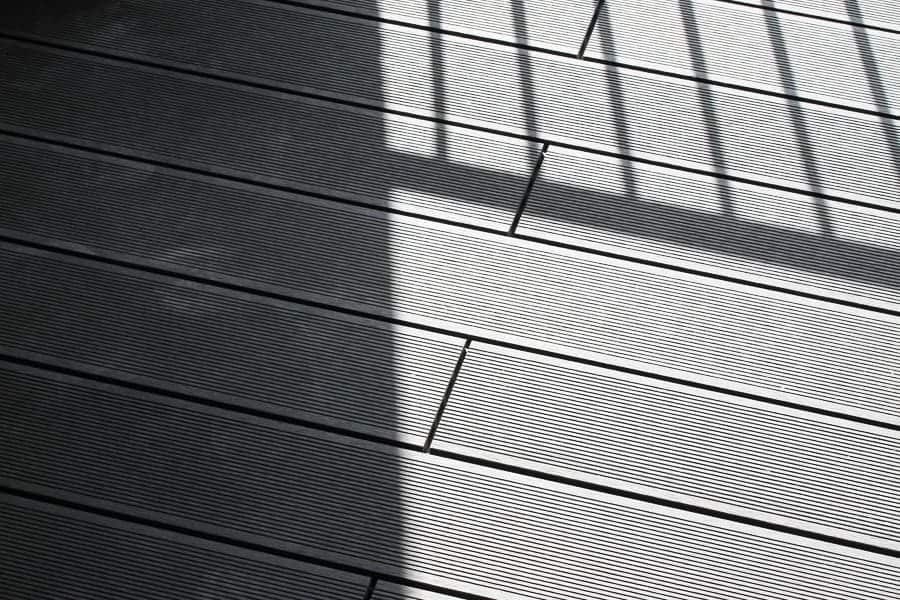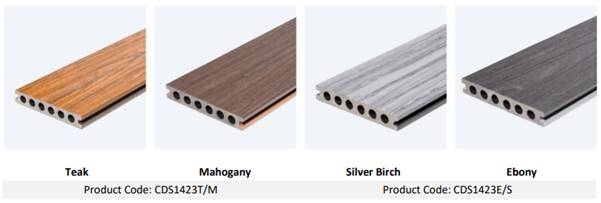
Decking an area in your garden is a fantastic way to create variety and improve the use of space. Not only does it look attractive, but it is also a practical accompaniment to your lawn, serving as a great place to set up an outdoor eating area. Decking posts can also be used to create a pergola effect shelter or structure over decked areas, which creates a peaceful place to relax or enjoy some shade in the hotter months.
Our range of composite decking at Edge is suited to most properties and styles; there are a few different decking boards designs available, so we thought we should put them side-by-side and help you figure out which decking ideas and designs to go for!
Our Range of Composite Decking
Manufactured from sustainably-farmed wood fibres and recycled plastic, our composite decking range keeps its look and feel for far longer than timber with substantially less maintenance required.
-
- Long-lasting: will not rot, warp or twist over time
-
- Low-maintenance: does not need to be treated, sanded, sealed or stained like timber
-
- Non-slip and splinter-proof for greater safety
-
- Manufactured from FSC® certified wood
Our range boasts two exciting ranges of composite deck board, Classic and Signature:
Classic Range – Contemporary grooved composite boards. Classic wood-polymer composite (WPC) Decking Boards have a contemporary, grooved appearance, for that quintessential composite look. Boards are reversible, offering greater design possibilities.
Signature Range – Premium, capped wood-grain effect composite boards. Our Signature capped wood-polymer composite (WPC) decking boards have a timeless wood-grain appearance, for the look of wood without any of the downsides of timber decking. The boards are engineered with a plastic cap, boasting the maximum possible durability, with protection from expansion, fading and staining.
Accessories
At Edge Building Products, we supply everything you need to complete your decking project:
Plastic Decking T-Clip
Supplied in packs of 250 Clips. Typical installations would use about 9 T Clips per 3m length of decking. Suitable for Classic & Signature Deck boards.

Stainless Steel screw for fixing T-Clip to a timber structure
Supplied in packs of 250. 1 screw per T-Clip. Suitable for Classic & Signature Deck boards.

Metal Starter/End Decking Clip
These are used on the outside edges of the first and last boards. Typical installations would use about 9 T Clips per 3m length of decking on the first and last run only. Suitable for Classic & Signature Deck boards.

Bullnose Board for Signature Decking
Available in all 4 colours. Supplied in 3m Lengths.

Corner Profile for Classic Decking
Available in all 4 colours. Supplied in 3m Lengths.

How to lay decking
Due to the solid composition of our decking boards, installing them may be a little more difficult for one person, but this can be easily overcome by teaming up with someone else to get the job done. The finish you get with this superior solid composite decking is unrivalled with other options.
It is important that hollow composite decking boards are installed with some sort of closure on the end of their boards, such as an end cap to prevent water and insects from getting inside the boards. If this is not done correctly, it can cause problems over time and the boards can become damaged. Don’t fret, we supply end-caps!

Below is a guide to installing our composite decking boards:
Fix starter/end clips along one perimeter edge with 19mm screws (FIG 6)
1. Slide the first deck board into the clips and secure the other side of the board using plastic t-clips and a 30mm black screw directly through the fixing channel of the joist. Please note: Achieve completely uniform board gaps by ensuring all boards are firmly pressed against t-clips
2. Direct fix through board edge at the centre of each board using 30mm screw, which will help ensure equal board expansion and contraction in all directions (FIG 7)
3. Tighten clips once the next boards are in place (FIG 8) Please note: where boards meet end-on-end, ensure that a 5mm gap is left between board ends to allow for natural expansion of boards
4. Repeat this process until the whole area is decked (FIG 9)
5. Install starter/end clips along edge prior to installing final two boards, and slot boards into place, before tightening clip as shown (FIG 10)

A bit of background information
There are two types of composite decking boards; capped and uncapped. As composite decking has advanced, the capped versions have become more popular as manufacturers are able to create varied wood grain patterns and subtle textures and streaks, that reflect the beauty of nature and exotic hardwoods, whilst keeping the decking boards and decking materials low maintenance.
There is also a market for decking tiles, which normally provide a temporary surface that can be lifted and transported. However, we find that these are not as hard-wearing as boards, and they have visible seams which detract from the beautiful natural look that most composite decking boards achieve.
Price
Composite decking may be a little more expensive initial purchase than timber decking, hardwood decking and softwood decking – However, due to the low amount of maintenance required, the overall cost quickly becomes competitive. A regular wash with mild soapy water or a jet wash will keep the deck area nice and clean and enhance its long life.


 My Basket
My Basket 
